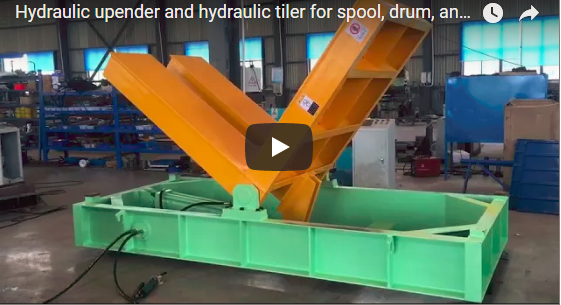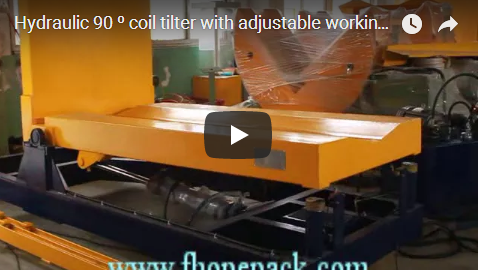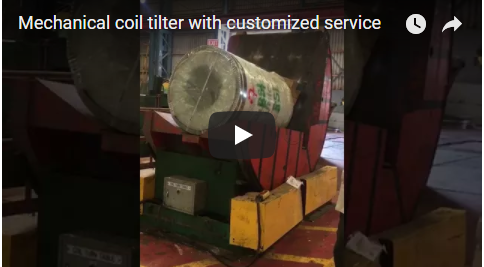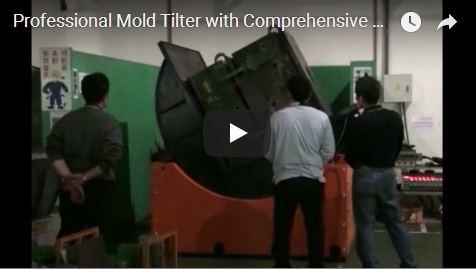Advanced Solutions for Steel Sheet Pallet Changing & Upending: A Technical Deep Dive
Handling large, heavy stacks of steel sheets presents significant logistical and safety challenges in manufacturing and warehousing environments. Efficiently transferring these materials between pallets, or rotating them for processing, requires specialized equipment. This article explores the technical aspects, design considerations, and operational benefits of mechanical and hydraulic steel sheet pallet changers and upenders.
Steel sheets, whether raw material or processed components, are often bulky, heavy, and susceptible to damage if mishandled. Manual handling is often impractical and unsafe, leading to risks of worker injury and product defects. Key challenges include:
- Weight: Stacks can weigh several tons, exceeding manual handling limits.
- Stability: Loads can be unstable, especially during transfer.
- Damage Prevention: Scratches, dents, or bending can render sheets unusable.
- Efficiency: Manual or semi-automated processes can be slow and bottleneck operations.
- Safety Regulations: Compliance with material handling safety standards is crucial ([Refer to OSHA guidelines for safe material handling]).
2. The Solution: Automated Pallet Changing and Upending Systems
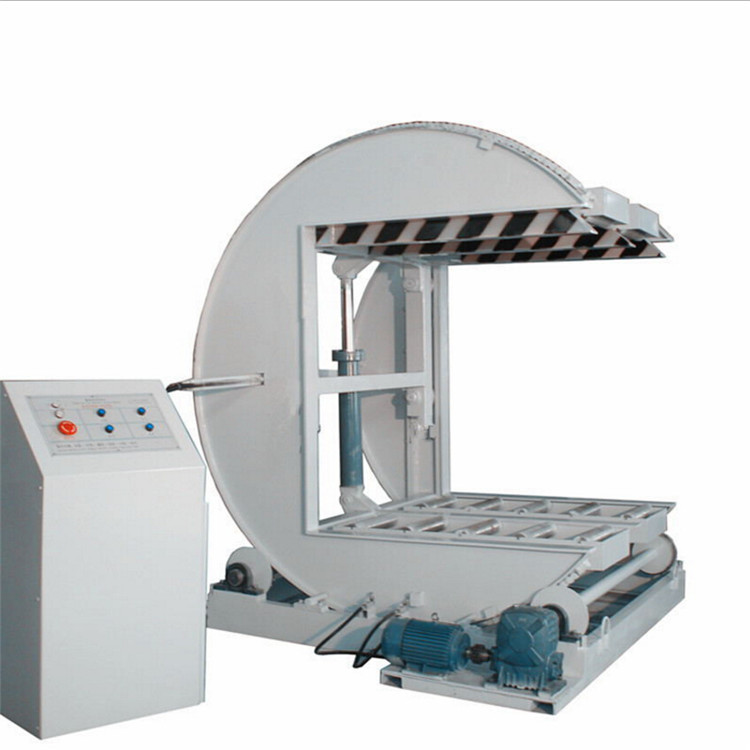
Steel sheet pallet changers and upenders are engineered solutions designed to address these challenges. They automate the process of:
- Pallet Changing: Transferring a stack of steel sheets from one pallet type to another (e.g., wood to plastic, in-house to shipping pallet).
- Upending/Inverting: Rotating the load, typically by 90° or 180°, for inspection, processing, or changing orientation.
These systems primarily fall into two categories based on their drive mechanism: Mechanical and Hydraulic.
3. Mechanical Steel Sheet Pallet Changers & Upenders
Mechanical systems utilize electric motors, gearboxes, chains, or screw mechanisms to achieve clamping and rotation.
- Design & Structure: Typically feature robust steel frames, electrically driven clamping systems (often side-pressure plates), and a rotational mechanism powered by motors and gear reducers. Control systems manage the sequence of operations.
- Components: Key elements include the main frame, fixed and movable clamping plates, drive motors, gearboxes, roller or chain conveyors (for loading/unloading), and PLC-based control panels with HMI.
- Operation: The load is positioned within the machine, clamps secure the sheets and pallet, and the mechanism rotates or transfers the load as required.
- Advantages: Often simpler in terms of component types, potentially easier maintenance for teams familiar with electro-mechanical systems, no risk of hydraulic fluid leaks.
- Considerations: May have limitations in load capacity compared to hydraulics, potentially higher wear on mechanical components under extreme loads, cycle times might be slightly longer for very heavy loads.
- User Perspective: Operators often appreciate the straightforward operation. Maintenance typically involves lubrication, inspection of chains/gears, and electrical checks.
(Image: [Insert relevant image of a mechanical upender/changer if available], Alt Text: Mechanical steel sheet pallet upender securely clamping a load)
4. Hydraulic Steel Sheet Pallet Changers & Upenders
Hydraulic systems leverage the power of pressurized fluid to actuate clamping and rotation, offering significant force and smooth control.
- Design & Structure: Built with heavy-duty steel frames designed to withstand immense hydraulic pressure. Feature powerful hydraulic cylinders for both clamping and tilting/rotating actions. A dedicated hydraulic power unit (HPU) supplies the necessary pressure.
- Components: Includes the structural frame, hydraulic cylinders (clamping and rotation), hydraulic power unit (motor, pump, reservoir, valves), control valves, hoses/piping, and an integrated control system.
- Operation: Hydraulic pressure precisely controls the clamping force applied to the steel sheets and pallet. Large cylinders provide the torque needed to rotate even multi-ton loads smoothly.
- Advantages: High load capacity capabilities, extremely smooth and controlled motion, ability to generate and hold significant clamping force, generally very robust and durable for heavy-duty cycles.
- Considerations: Requires hydraulic fluid maintenance (monitoring levels, changing filters, checking for leaks), potentially higher initial cost, requires personnel skilled in hydraulics for complex maintenance.
- User Perspective: The smooth power delivery is often noted. Routine checks on the HPU and hydraulic lines are essential preventive maintenance tasks. Safety protocols around high-pressure hydraulics are critical.
(Image: [Insert relevant image of a hydraulic upender/changer if available], Alt Text: Hydraulic pallet inverter rotating a heavy stack of steel sheets)
5. Technical Specification Comparison (Typical Ranges)
| Feature | Mechanical System | Hydraulic System | Notes |
|---|---|---|---|
| Max. Load Capacity | 1,000 - 5,000 kg (Typical) | 2,000 - 20,000+ kg | Hydraulics generally scale to higher loads |
| Rotation Angle | 90° / 180° | 90° / 180° | Application dependent |
| Cycle Time | 60 - 120 seconds | 45 - 90 seconds | Depends on load size and rotation angle |
| Clamping Method | Electric Motor/Screw/Gear | Hydraulic Cylinders | Direct pressure application |
| Power Source | Electric Motors (3-Phase) | Electric Motor (for HPU) | Voltage/Phase specific to region |
| Control System | PLC with HMI | PLC with HMI | Standard industry practice |
| Footprint | Varies | Varies | Hydraulic unit requires additional space |
| Maintenance Focus | Mechanical wear, Lubrication | Hydraulic fluid, Seals, HPU | Different skill sets may be needed |
Note: These are general ranges; specific values depend heavily on the custom design.
6. Design, Structure, and Safety Considerations
Regardless of type, effective steel sheet handlers share common design principles:
- Structural Integrity: Frames are built from heavy-gauge steel (e.g., Q235, Q345 steel) with reinforced welds to handle dynamic loads during rotation and static loads during clamping. Finite Element Analysis (FEA) is often used in the design phase.
- Clamping System: Designed to apply sufficient pressure without damaging the sheets. Pressure regulation and soft clamping surfaces (e.g., durable polyurethane pads) are important.
- Safety Features: Essential elements include safety fencing/light curtains, emergency stops (E-stops), overload protection, secure locking mechanisms during rotation, and controlled acceleration/deceleration.
- Integration: Designed for easy loading/unloading via forklift or integration with conveyor systems.
7. Operational Experience & Workflow Integration
From a user perspective, integrating these machines yields tangible benefits:
- Enhanced Safety: Drastically reduces manual handling risks associated with heavy loads.
- Increased Efficiency: Automates a previously labor-intensive task, significantly reducing cycle times.
- Reduced Product Damage: Controlled clamping and rotation minimize scratches, dents, and other handling-related defects.
- Improved Ergonomics: Eliminates awkward postures and heavy lifting for operators.
- Streamlined Workflow: Enables seamless transition between different pallet types or prepares sheets optimally for the next production step. Training is usually straightforward, focusing on safe operation and basic sequence understanding.
8. Customization: Tailoring to Specific Needs
The statement "The solution can be customized per different size and Max. Loading" is fundamental. Customization options often include:
- Load Dimensions: Adjusting the opening range and machine size to accommodate specific sheet lengths, widths, and stack heights.
- Load Capacity: Engineering the structure, drive system, and clamping mechanism for the required maximum weight.
- Pallet Compatibility: Designing the base and clamping to handle various pallet types (wood, plastic, metal, CHEP, Euro).
- Automation Level: Options range from standalone units to fully integrated systems with automated infeed/outfeed conveyors.
- Operating Environment: Modifications for specific conditions like cleanrooms, corrosive atmospheres, or outdoor use.
9. Choosing the Right System: Key Decision Factors
Selecting between a mechanical and hydraulic system depends on:
- Load Weight: Hydraulics excel with consistently very heavy loads (>5,000 kg).
- Throughput Needs: Cycle time requirements might favor one system over the other.
- Budget: Initial investment costs can differ.
- Maintenance Capabilities: Assess in-house expertise for mechanical vs. hydraulic systems.
- Operating Environment: Concerns about hydraulic fluid leaks might favour mechanical in sensitive areas.
Conclusion
Steel sheet pallet changers and upenders are vital pieces of material handling technology, critical for safety, efficiency, and product integrity in industries working with sheet metal. Understanding the technical differences between mechanical and hydraulic systems, their design features, operational benefits, and customization potential allows businesses to select the optimal solution for their specific application. By investing in the right equipment, companies can significantly improve their logistics and production workflows.
Need a tailored solution for your specific steel sheet handling requirements? [Contact us] today to discuss your project.

